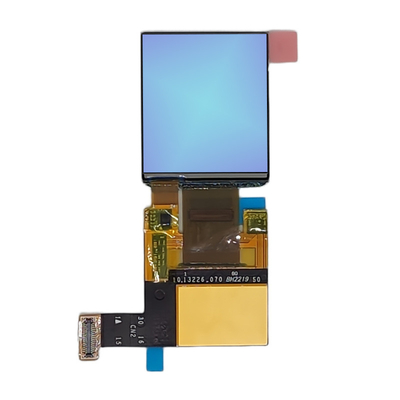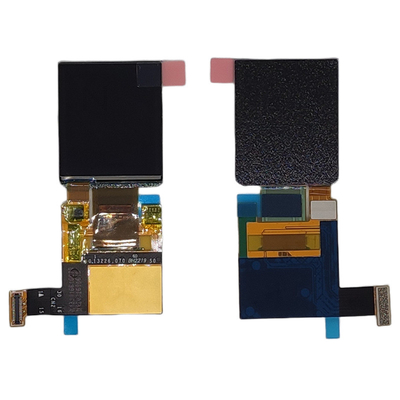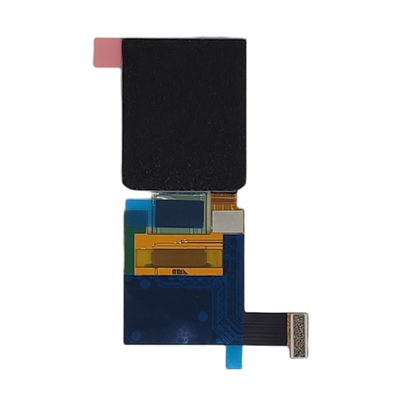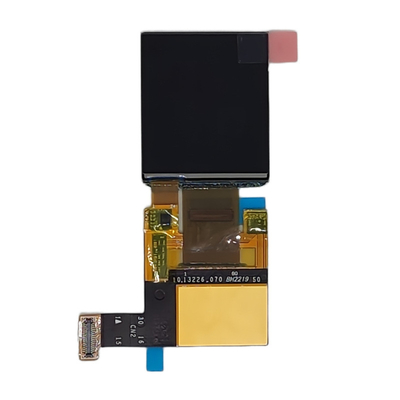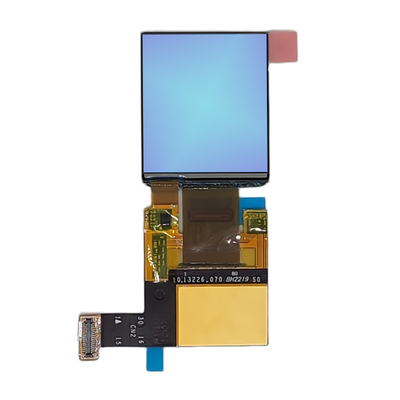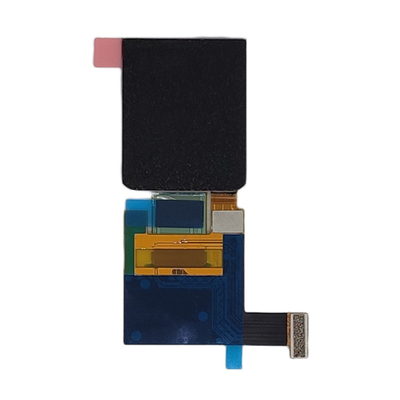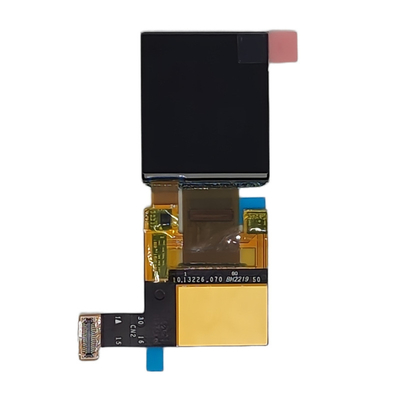-
Exposição do LCD TFT
-
Exposição de TFT do tela táctil
-
Exposição redonda de TFT
-
projeção a cores do tft
-
módulo amoled da exposição
-
Exibição microed
-
Tipo TFT da barra
-
Display TFT quadrado
-
Exposição do LCD do brilho alto
-
Exibição LCD COB
-
Luz solar TFT legível
-
Exposição de UART TFT
-
Módulo da exposição do LCD
-
Exposição de PMOLED
-
exposição do epaper
-
Indicação digital do diodo emissor de luz
-
Painel de toque capacitivo
Módulo de Display AMOLED de 1,41" 320*360 com Touch OnCell Resolução Interface MIPI/SPI/QSPI Driver IC 450C/D RM69330F12/SH8601A
| Lugar de origem | China |
|---|---|
| Marca | HuaXin |
| Certificação | ISO14001/ ISO9001/IATF16949 |
| Número do modelo | ESHX0141320360 |
| Quantidade de ordem mínima | 1000 |
| Preço | Negociável |
| Detalhes da embalagem | blister + caixa de espuma + saco de bolhas + embalagem interior + embalagem principal |
| Tempo de entrega | 6 a 8 semanas |
| Termos de pagamento | T/T |
| Habilidade da fonte | 50K pelo mês |

Contacte-me para amostras grátis e vales.
Whatsapp:0086 18588475571
bate-papo: 0086 18588475571
Skype: sales10@aixton.com
Se você tem algum interesse, nós fornecemos a ajuda online de 24 horas.
x| Tecnologia de exibição | ecrã táctil | Nome | Módulo AMOLED |
|---|---|---|---|
| Tamanho | 1,41" | Resolução | 320 x 360 |
| Brilho | 450cd/m2 | Interface | MIPI/SPI/QSPI |
| unidade de circuito integrado | RM69330F12/SH8601A | ||
| Destacar | Modulo de exibição 320*360 AMOLED,QSPI Interface AMOLED Display Module,MIPI interface AMOLED Display Module |
||
ESHX0141320360é um módulo OLED de 1,41 polegadas, 320*360 Resolução, MIPI/SPI/QSPI Interface, brilho é 450 Cd/M2 color oled display, condução IC é RM69330F12/SH8601A
A: Parâmetro do produto
| Parte n.o: | ESHX0141320360 |
| Modo de exibição | 1.41 polegada Display AMOLED |
| tamanho do contorno ((mm) | 26.04 (W) x 31.78 (H) x 0.75 ((D) |
| Tamanho AA ((mm) | 23.84 × 26.82 |
| Mostrar pontos | 320*360 |
| ângulo de visão | todos |
| Brilho | 450 |
| interface | MIPI/SPI/QSPI |
| IC de condução | RM69330F12/SH8601A |
| Tocando | oncell |
B:Imagem do produto
![]()
![]()
![]()
![]()
C: Definição de desenho
D: Conhecimento de produtos Oled
Vantagens do OLED:
Os aparelhos OLED são mais leves e mais finos do que os LCDs, alto contraste, alta saturação de cores, menor consumo
Desvantagens do OLED
AMOLED é extremamente caro do que LCD e TFT, vida útil é mais curta do que LCD e TFT
E. Informações sobre a empresa
Vantagem da Huaxin:
1. base industrial localizada na cidade interior que tem um custo-benefício
2. equipamento novo mais avançado que pode manter a qualidade estável
3. a maioria dos processos utiliza equipamento totalmente automático que tem eficácia e qualidade estável
4. engenheiros profissionais e líderes de produção que trabalham no campo do LCD há mais de 20 anos
5. auto-projeto para produto personalizado
Os nossos certificados
1.ISO14001/
2.ISO9001/IATF16949
3.SGS do módulo LCD
- Huaxin Technology (Enshi) Co., LTD
- Hubei.Enshi
- Data de fundação:2009
- Empresa de alta tecnologia que trabalha principalmente em investigação e desenvolvimento, produz e vende LCD,LCM,TFT,backlight,OLED
- O LCD inclui: VA,TN, HTN, STN, FSTN, CSTN e outras séries
- O LCM inclui: COB,TBA, COG,TP, backlight LED e outras séries
- capital registado: vinte milhões
- pessoal atual: mais de 500
- A RD representa 10%
- O QC representa 15%
F:Capacidade de produção
| Produção anual Capacidade |
2021 (atual) | 2022 (Objetivo) | 2023 (desafio) | 2024 (desafio) | 2025 (desafio) | Observação | ||
| Produto LCD Capacidade |
4.5 | 9 | 9 | 9 | 9 | Unidade:milhares de Logaritmos/Dia |
||
| Produto LCM Capacidade |
70 | 150 | 300 | 450 | 450 | Unidade: Mil peça/dia |
||
| Produto de luz de fundo Capacidade |
100 | 200 | 300 | 500 | 500 | Unidade: Mil peça/dia |
||
| Produto OLED Capacidade |
10 | 20 | 30 | 40 | 50 | Unidade: Mil peça/dia |
||
G: Aplicação do produto
1Caixa de segurança e instrumento
2. lock&smart home
3Transmissor e relógio
4.watch&radio
5.collimator&navigator
H: Características do display AMOLED
1.Pixels de auto-e-missiva:
2.Ratio de contraste:
3- Precisão de cor e vibração:
4Ângulos de visão:
5.Eficiência energética:
6- Especificidade e flexibilidade:
7Tempo de resposta:
I: Como é a eficiência energética dos ecrãs AMOLED em comparação com outras tecnologias de exibição?
1Consumo de energia:
- Os ecrãs AMOLED consomem energia por pixel, o que significa que os pixels que exibem conteúdo negro ou escuro consomem muito pouca energia,enquanto os pixels que exibem conteúdo brilhante ou branco consomem mais energia.
- Os ecrãs LCD e LED, por outro lado, exigem uma luz de fundo constante que consome energia independentemente do conteúdo exibido.
2Dependência do conteúdo:
- Os ecrãs AMOLED são mais eficientes em termos energéticos para conteúdos com muitas áreas escuras ou pretas, uma vez que os pixels individuais podem ser desligados para economizar energia.
- Os ecrãs LCD e LED consomem uma quantidade relativamente constante de energia, independentemente do conteúdo exibido, uma vez que a luz de fundo permanece ativa.
3Controle de brilho:
- Os ecrãs AMOLED podem ajustar dinamicamente o brilho dos pixels individuais, permitindo uma melhor eficiência energética em cenários de baixo brilho.
- Os ecrãs LCD e LED têm tipicamente um brilho fixo da luz de fundo, o que pode resultar num maior consumo de energia, mesmo quando o conteúdo do ecrã não requer o brilho máximo
4. Tamanho da tela
- Os ecrãs AMOLED tendem a ser mais eficientes em termos de energia para tamanhos de ecrã menores, uma vez que o consumo de energia aumenta com o número de pixels.
- Os ecrãs LCD e LED maiores podem exigir mais luz de fundo que consome mais energia, potencialmente reduzindo sua eficiência energética em comparação com os ecrãs AMOLED do mesmo tamanho.



